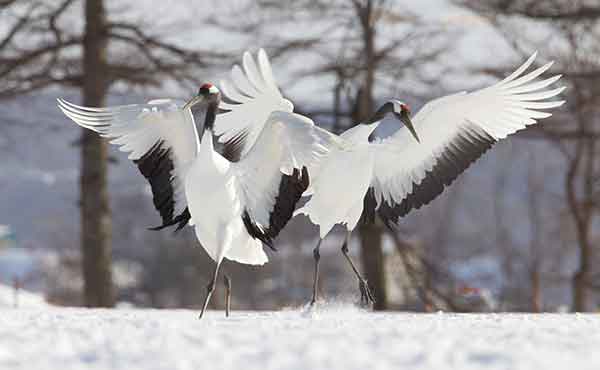Japan in Winter – Spectacular Birdwatching, Snow Monkeys and More…

Japan in winter is surely one of the greatest wildlife destinations for any birdwatcher, and its range of habitats support an abundance of wildlife.
In the south, Arasaki on the island of Kyushu holds thousands of hooded and white-naped cranes, with the possibility of sandhill and common cranes mixed in with them. In the north, the spectacular island of Hokkaido has a wintering population of stunning Steller’s sea eagles (it’s only when you see one dwarfing a white-tailed eagle alongside it that you can really appreciate just how large it is!). Also in Hokkaido, you can watch beautiful red-crowned cranes dancing in the snow at their roost, while a dawn mist rises from a geothermally heated river. In contrast, the coast has an interesting range of seabirds that can be seen from land as well as on a boat trip, with the possible bonus of seeing a charismatic sea otter.


As if that wasn’t enough, there’s also the world’s largest owl – the rare and endangered Blakiston’s fish owl – whose survival is being assisted by the development of ecotourism. And last, but by no means least, you may well have seen the famous snow monkeys on wildlife documentaries. Well, you can visit them in the mountains of Honshu and, no doubt, take many photos of them posing in their thermal baths. That same area of Honshu has excellent forests that are home to good numbers of interesting birds, such as Japanese grosbeak and Japanese accentor, with a chance of Japanese waxwing.
In addition to fantastic wildlife and beautiful scenery, one of the great delights of travelling in Japan is gaining some insight into its dense culture. The Japanese are extremely polite and respectful, with a sense of order that ensures any visits to birdwatching destinations are well organised and comfortable. Nature reserves such as the crane sanctuaries at Arasaki and on Hokkaido are popular and well-maintained sites. Some hotels on Hokkaido aim to ensure that birdwatchers get to see the splendid Blakiston’s fish owl, and our trip uses one of these to maximise the chances of seeing this awesome bird. Many hotels even set up bird feeders to ensure good views of woodland and garden species, and you can take good photos of some species at these feeding stations. Another great feature of any visit to Japan is the food – the Japanese diet is well-known as being one of the healthiest in the world. It may come as a surprise just how enjoyable Japanese food is – I’m a relatively seasoned traveller, but it certainly came as a surprise to me on my first visit.

I love visiting Japan and I’m delighted to have put together this new tour with advice from Dr Mark Brazil, the author of Birds of East Asia and the authority on birdwatching in Japan. I hope you will be tempted to join me.
